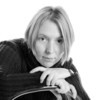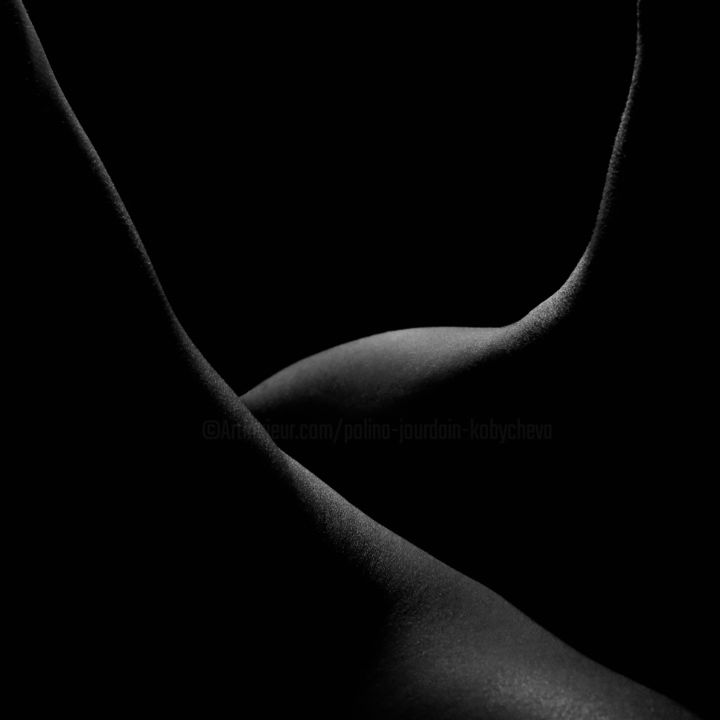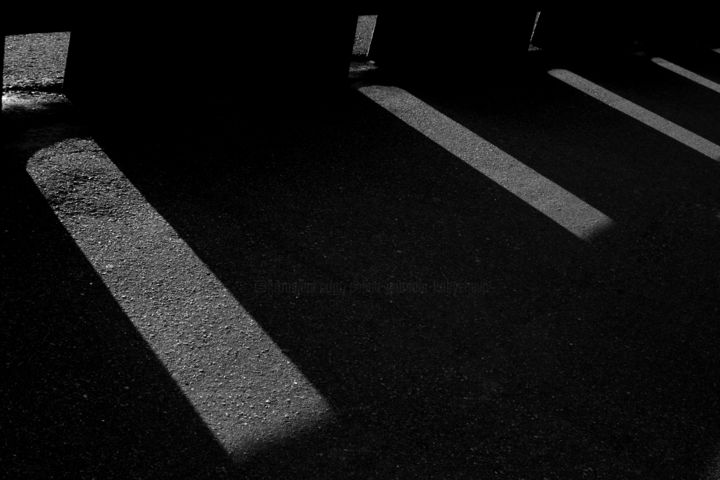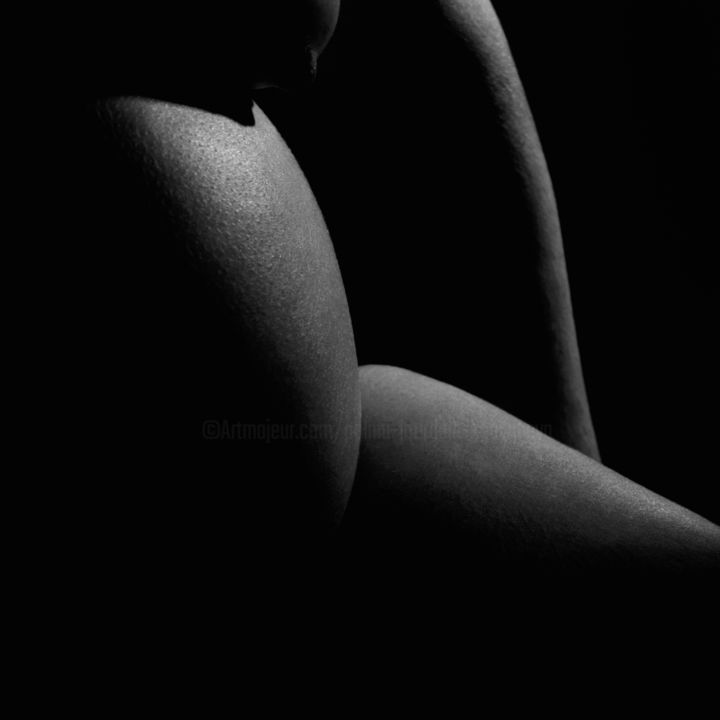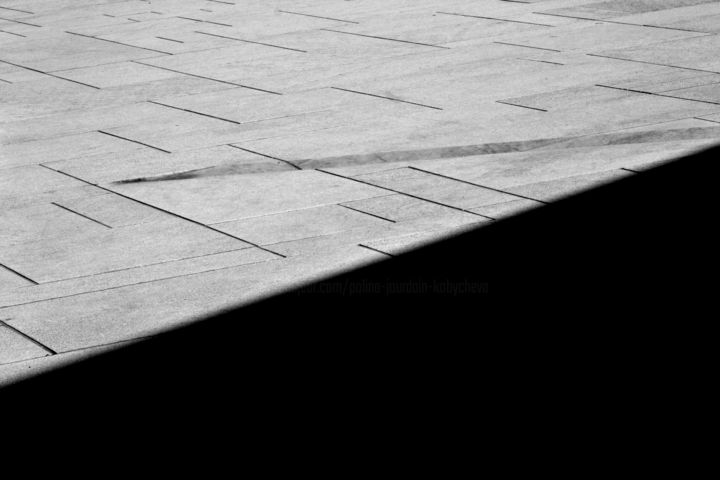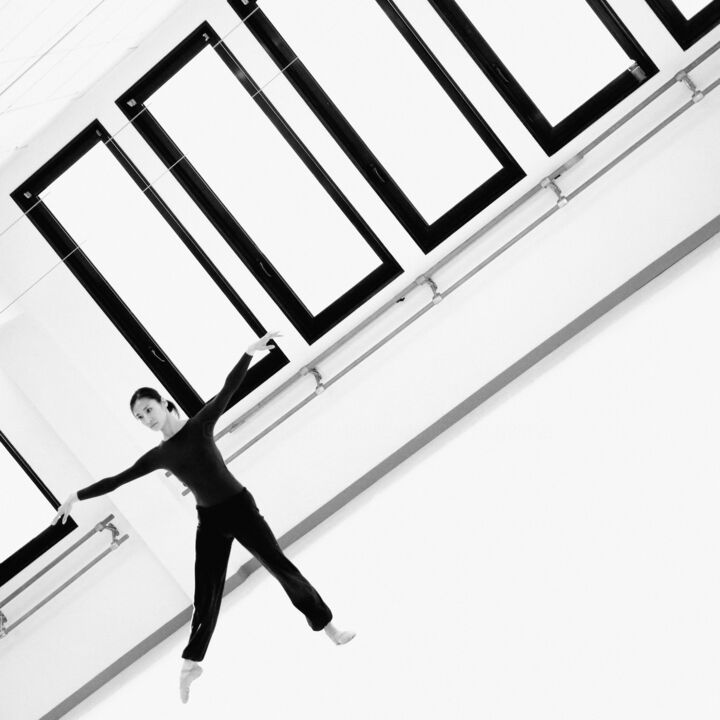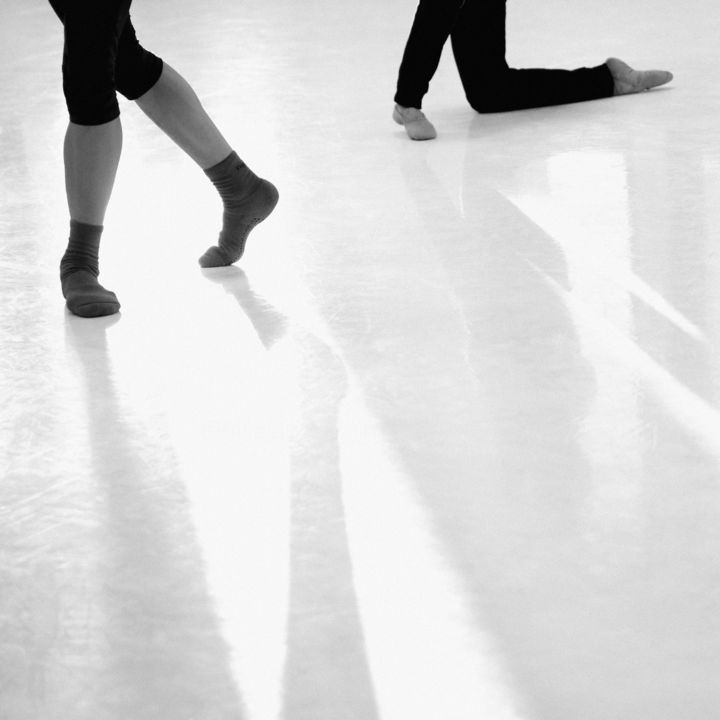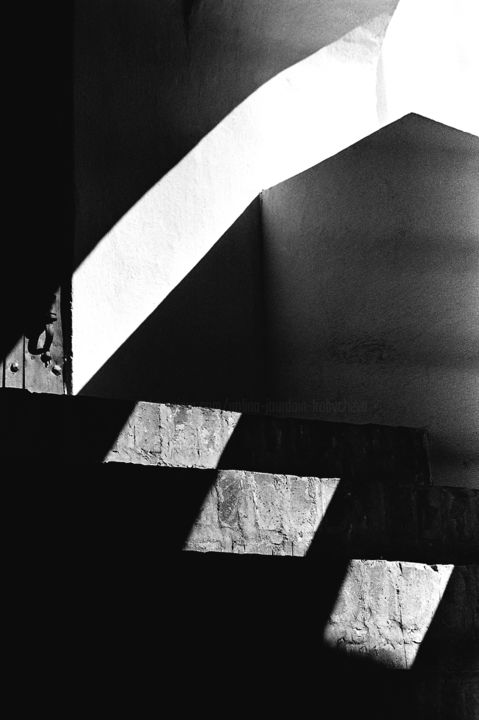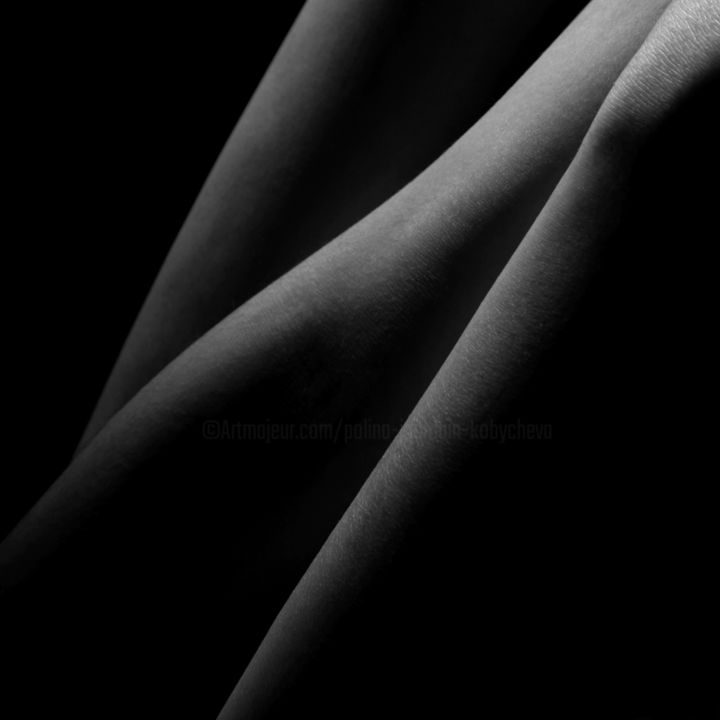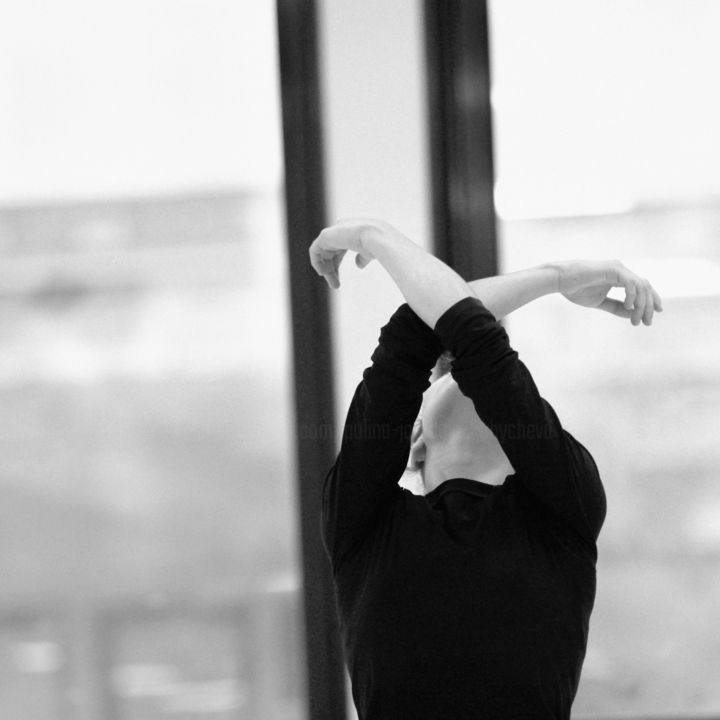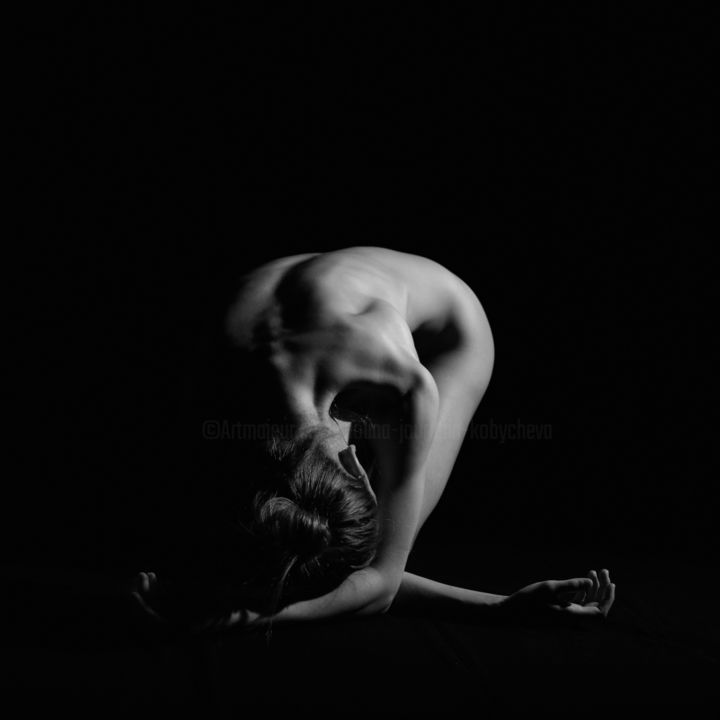What inspired you to create artwork and become an artist? (events, feelings, experiences...)
I have always needed to express my inner world. When I was a teenager, I thought I would learn to draw, and later to write.
Photography is a very intimate thing for me.
My father was an amateur photographer. He took photos of mushrooms in the woods, flowers, cats and my portraits when I was little. Nothing special, but the darkroom where he developed his photos had something magical. As a child, I was fascinated by this magic. All those moments spent with my father looking at his photos had a profound impact on me, and today I have the feeling that he never dared to really develop his passion.
My first interest in photography dates back to this time; above all, I keep the indelible trace of a determination, that of following one's dreams. Witness to the reasonable path that my parents had chosen – that of an engineer – to “ensure daily life” in a Soviet Union where daydreaming had little place, I understood very young how life sometimes diverted us from our paths. I remember that Jacques Brel said that we must never give up on research, on adventure, on life, on love... because happiness is our true destiny.
A search like that of beauty in this tormented era and disappointments after hope at the time when perestroika was blowing a promising wind of change over his country. After fifteen years of practicing sociology, I focused on my research on this harmony, which seemed so lacking to me. What I like to remember is what remains of the beauty of the movements, their poetry. I like to observe the mystery of movement, its birth. He appears and the next second he's gone. Where does this beauty come from?
What is your artistic background, the techniques and subjects you have experimented with to date?
Polina Jourdain-Kobycheva came to photography after fifteen years of practicing sociology, her original profession. His involvement in society, both in terms of research and in terms of the analysis of individuals, has allowed him to sharpen his perspective on men and their works.
Her first works were architectural photos tracking down the details, scrutinizing the material from which she drew a new order organized by her artistic vision.
Then his interest in dance led to a major project with the dancers of the “Malandain Ballet Biarritz”, crowned in 2016 by an exhibition at the Crypte Sainte-Eugénie in Biarritz, illustrating “Le Temps d’Aimer”. The body is treated in close-ups to achieve the improbable synthesis of anatomical aesthetics and the dreaminess of curves.
The publication of two art books, one on dance “Danse l'Absolu Délicat”, the other on the nude “Painting of Light on a Black Background”, announce and confirm a new style always dominated by a singular sensitivity on beauty.
Since 2018, another personal project on dance “ En Corps ”, dedicated to former dancers, has seen the light of day and continues to grow further. Through the representation of the body, Polina Jourdain-Kobycheva invents a new aestheticism, a new language appropriating the evolution of the “body-history”.
Polina Jourdain-Kobycheva offers a poetics of the body and its movements to make its representation not only an object, but a tool for thinking about the world.
Subsequently his work continues around Basque Pelota and dance. This sporting discipline, anchored in Basque tradition, is presented in its artistic work under the prism of the body in movement, but also that of the material, placing its subject in a cultural context and its local transmissions.
In 2021 with Editions Arteaz, she is releasing a new work, “Pilota Arimak”, on the traditional art of Basque pelota. It tells the fruits of a story between a man, the material and the local culture.
In October 2022 with the support of ALCA Nouvelle Aquitaine she released another work “Dantza, Pilotari!”, a link between Cesta Punta and dance.
Currently she is returning to her work around the beauty of the body, particularly of former dancers, which has been slowed down by the health crisis.
She also develops an activity of therapeutic support through photography.
What are the 3 aspects that differentiate you from other artists, making your work unique?
I think what makes me special is the attention I pay to the people I work with. I always try to create an intimate environment allowing the person to remain themselves in front of the camera. For example, working on Nude is very delicate, and requires absolute confidence. It is important.
I think these 3 aspects that differentiate me from others are:
Delicacy
Humanism
Perception of beauty
Where does your inspiration come from?
My inspiration comes from calm, from moments when I feel calm. You know, that moment when it feels like nothing is happening. It’s when the mind is free for ideas to find their place.
What is your artistic approach? What visions, sensations or feelings do you want to evoke in the viewer?
I want to arouse in people the feeling of beauty, natural beauty, true beauty.
When I take my nude photos for example, it doesn't matter whether the person is young or old, for me, they are beautiful, their body reveals the deep beauty of Being.
When I photograph movement for example, I am not looking for the perfect movement of the dance, but the revealer of this movement. If we're looking for the perfect move, then we're going to see the show. I am not looking for perfection but what is behind it, what it suggests.
I also like to photograph faces, looks and postures at the same time, amused and ironic, serious and playful, as if to take up a challenge in the face of the wave of anonymity which crushes and standardizes individuals. In my portraits, I also want to show the hazards of time passing, which wears out bodies and minds, but at the same time, a deep joy, an assurance, as well as a pleasure of feeling alive, again and again.
What is the process of creating your works? Spontaneous or with a long preparatory process (technique, inspiration from art classics or other)?
It could be both:
Spontaneous creations when it comes to the project of dance with movement.
A long shot prepared in a studio with very precise lighting.
The important thing is that the initial idea is clear in my head at the start.
Do you use a particular working technique? if yes, can you explain it?
My approach remains quite classic. But I like to use high contrast light.
If I work in my studio, I work with high key lighting, or, conversely, with low key lighting.
I really like this opposition. For me it represents, in a certain way, the duality of the world.
Are there any innovative aspects in your work? Can you tell us which ones?
My work has always been focused around the beauty of the human body, movement, diversity, the freedom to be oneself and the evolution of the perception of body image.
I spent the years working and delving deeper into this subject, which interested me in all these manifestations: in the movements of dance and sport, in nudity, at all ages, in very close shots, in the portraits and in the emotions between people.
Do you have a format or medium that you are most comfortable with? if yes, why ?
I like the aluminum support for printing my photographs. I find that my photos don't really need framing.
I also like prints on paper with a mat because it responds more to our classic vision of the black and white photo print.
Where do you produce your works? At home, in a shared workshop or in your own workshop? And in this space, how do you organize your creative work?
I like working in my own space. I have a small studio that I can organize as best as possible so that the person who comes to see me for a photo shoot feels comfortable and safe.
I like to create a friendly atmosphere before the session, offering coffee and looking at books.
This allows the defenses to be relaxed, which is very important for the creation of a portrait and especially nudes.
Depending on the project, I also work outside the studio, for example in dance studios. My latest project, on the link between cesta punta and dance, was carried out in a space dedicated to this sport: the famous Jai Alai in Biarritz. It was extraordinary for me to work with dancers in this atypical space.
Does your work lead you to travel to meet new collectors, for fairs or exhibitions? If so, what does it mean to you?
I believe that we always travel through our works.
The more I work creatively - the more people I meet and opportunities to showcase my artistic work. With my works I am regularly invited to book fairs.
So far I have only exhibited in France and Russia, but each time it has been a very enriching experience. It also allows me to see my work from a new perspective.
Last year I worked on the project “Dantza, Pilotari!” » with the support of the Nouvelle Aquitaine region and the Public Office of the Basque Language. The zoom article on my artistic work appeared in ALCA magazine in November 2022. This allowed me to meet people and make them aware of future projects.
I very much hope that my work will lead me to travel to realize the project that is really close to my heart - on ancient dancers.
How do you imagine the evolution of your work and your career as an artist in the future?
I dream of returning to the dance project “ En Corps. What remains when the dancer's body is no longer performing? », dedicated to former dancers . It was presented for the first time as part of the Temps amour la danse 2018 festival in Biarritz.
I started this project by photographing the former dancers Jacques Alberca, born in 1942, and Gilles Schamber, born in 1960. What happens to the dancer's body as the years pass? The photos reveal a great interiority of movement, testify to a dancer who chooses the essential, freed from performance, and paradoxically less subject to constraints. The passage of time is an opportunity to do things differently. “The point of view of Western dance,” says Jacques Alberca, “still passes through the prism of technical performance. What questions me today is the change in point of view, namely, moving over time towards states of speaking bodies, regardless of age. »
For me the body makes sense, without anticipating the form, I focus on what the body produces and not on what it risks reproducing. Through the representation of the body, I speak of the evolution of the “body-history”. In my work I propose a poetics of the body and its movements to make its representation not only an object, but a tool for thinking about the world.
This initially purely artistic work allowed me to understand the multiple ways in which people relate to their bodies and what significant impact this has on relationships with themselves and all of their lives.
Working with nude photographs and interacting with the models, observing their reactions to how they feel and how their lives change after our work together, brought me closer to the idea that Photography can provide a momentum of evolution to a person's sense of self and the release of hidden emotions.
Of course, I am far from doing real therapeutic work. I simply make photos that help people feel more confident in life, build self-esteem, and feel a boost of energy.
I would like to continue my work in this direction.
Develop values of the new ethics and new sincerity that came to us with the era of metamodernism. I don't want to limit people to my intimate thoughts about age, love, beauty and aging. But I want people to be free to feel the emotions that my photographs arouse in them.
What is the theme, style or technique of your latest artistic production?
The beauty of lines, geometry and contrasts of light have always been one of my main styles of expression.
I like to get as close as possible to the surface, whether it is an object, the wall of a building or the skin of the human body.
For me, the material is united in its expressiveness.
Can you tell us about your most important exhibition experience?
The largest exhibition I had was presented as part of the “Le Temps d’Aimer la Danse” festival in Biarrirz at the Crypte Sainte Eugénie, in 2016. I exhibited 104 works created over two years as part of of a collaboration with Ballet Malandain Biarrirz.
If you could create a famous work in the history of art, which one would you choose? And why ?
I think this will always be the work on the human body and these expressions. I admire the old dancers.
Here is a source of inspiration and creativity that has not yet been explored sufficiently.
I like the idea of comparing the body in motion with sculpture. I think I'm going to do a few things like this.
If you could invite any famous artist (dead or alive) to dinner, who would it be? How
Would you ask him to spend the evening?
It could be several artists. Very difficult to give preference to one person in relation to all this wealth of talents. Jeanloup Sieff, I think will be the artist personality who fascinates me the most.

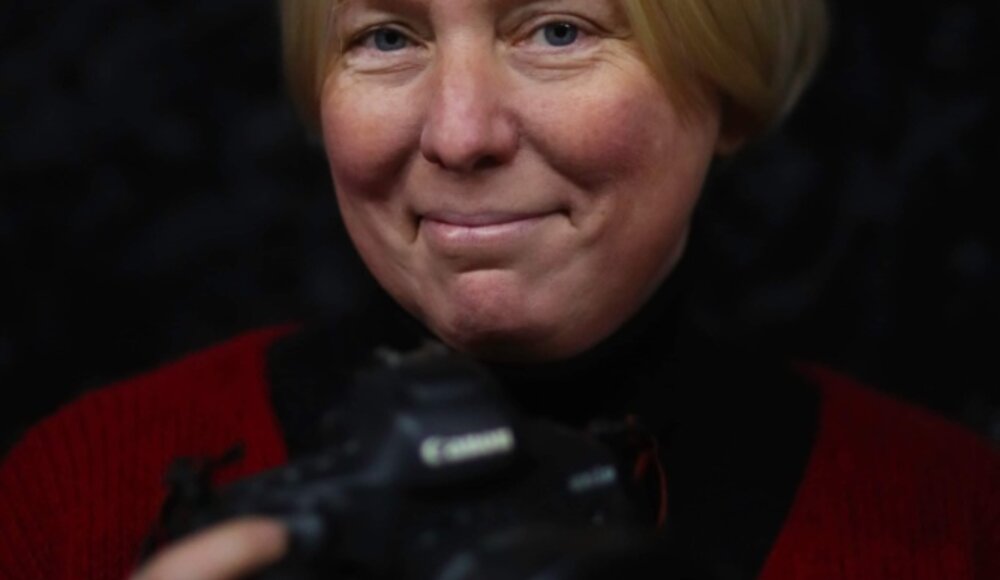






 Olimpia Gaia Martinelli
Olimpia Gaia Martinelli
